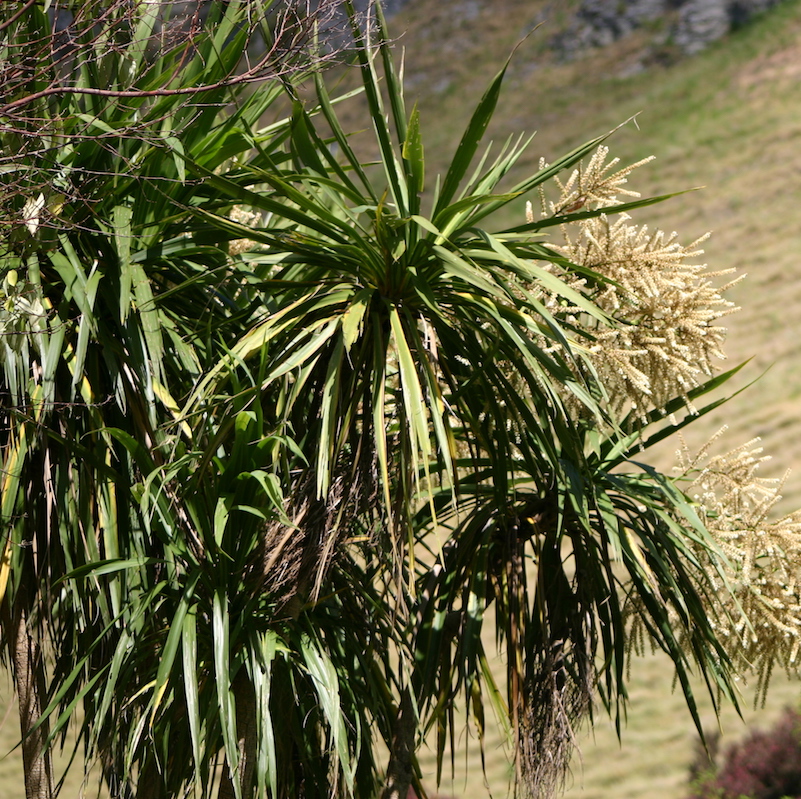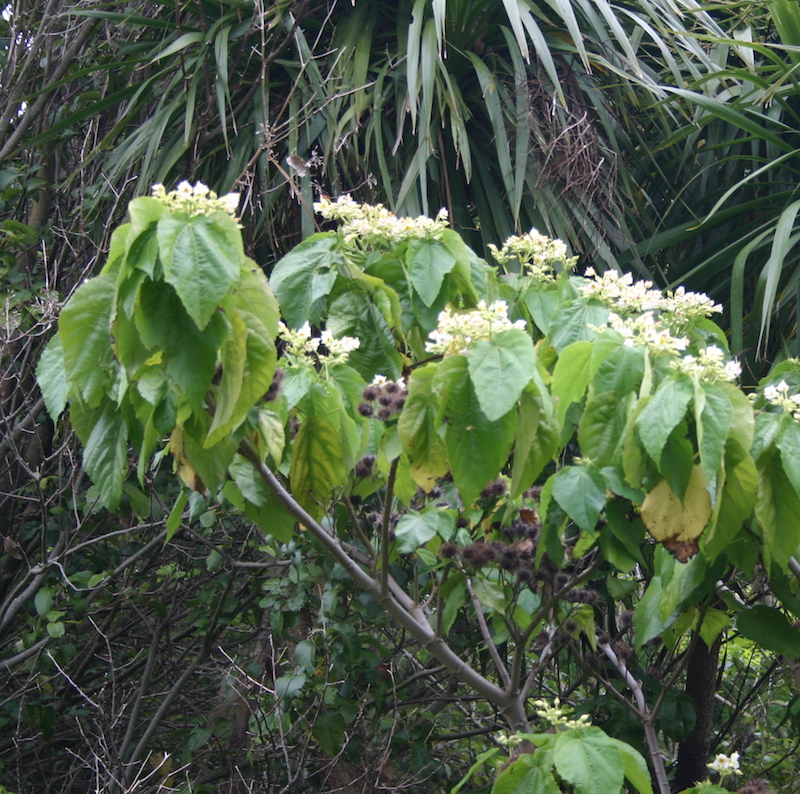LOCATION: Found throughout New Zealand, preferring wet, open areas.
CULTURE: Regarded as a sign of fertility and regarded as a magic plant by Māori because of its ability to grow again from cut stumps.
RONGOĀ: Many part of tī kouka are edible or have medicinal uses. The inner shoot and top of the stem were boiled and eaten by nursing mothers and were also given to children for colic. The tips of young branches were stripped of bark and leaves, steamed and eaten as a nutritious vegetable (a type of porridge was made from the sun dried, ground pith and inner roots). The tap roots were used in the same way.
Sap from the stem was used to heal open wounds, cracks in the skin and sores. The liquid from boiled leaves was used to treat dysentery and diarrhoea.
BIRDS: Tī kōuka bloom with big clusters of white flowers that produce small white berries that birds like kererū, tauhou, and tūī love to eat.
 Source: Mike Lusk
Source: Mike Lusk Five times winner of the prestigious international green space award.
Five times winner of the prestigious international green space award.
 Source Mike Lusk
Source Mike Lusk
 Source: Mike Lusk
Source: Mike Lusk